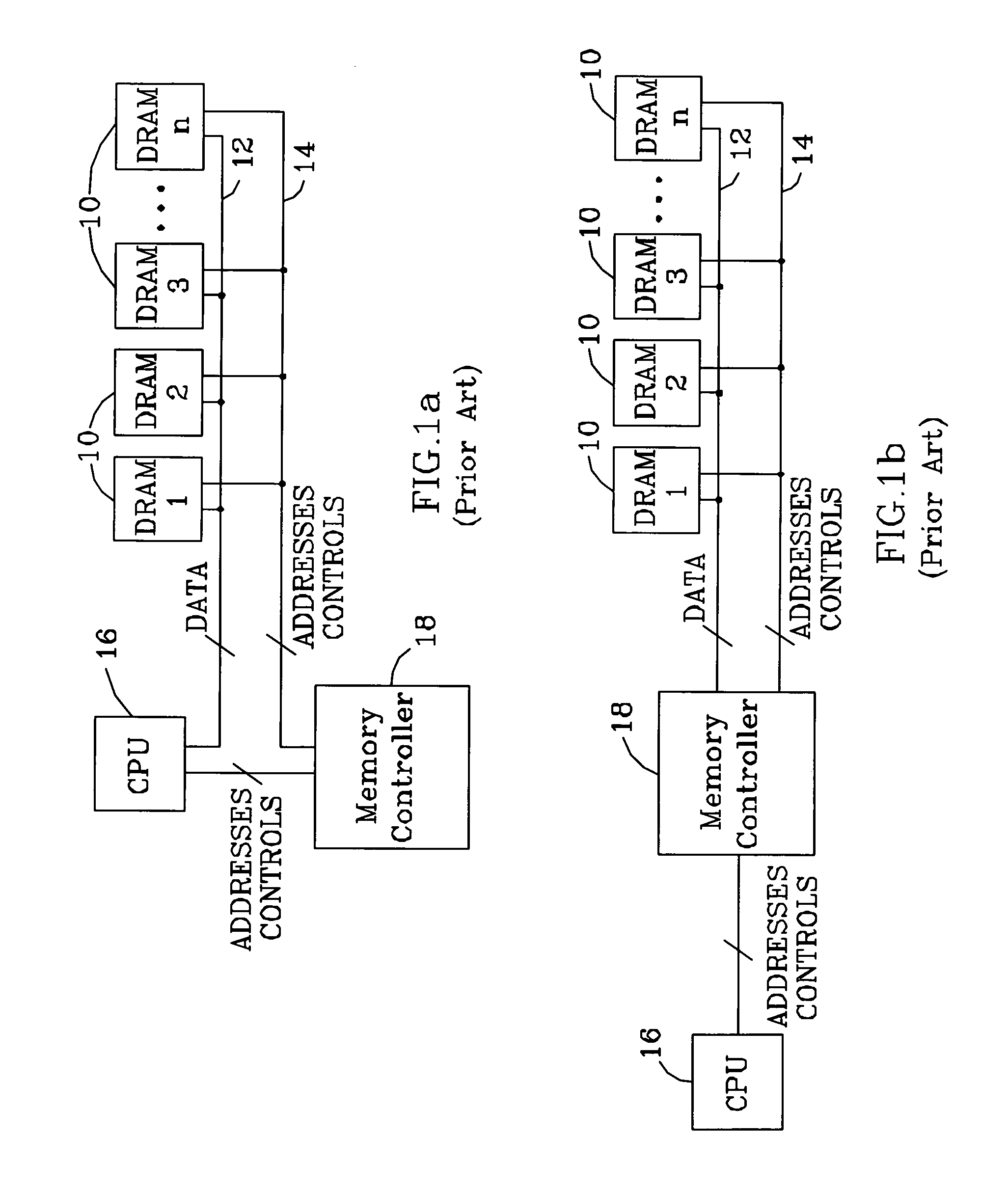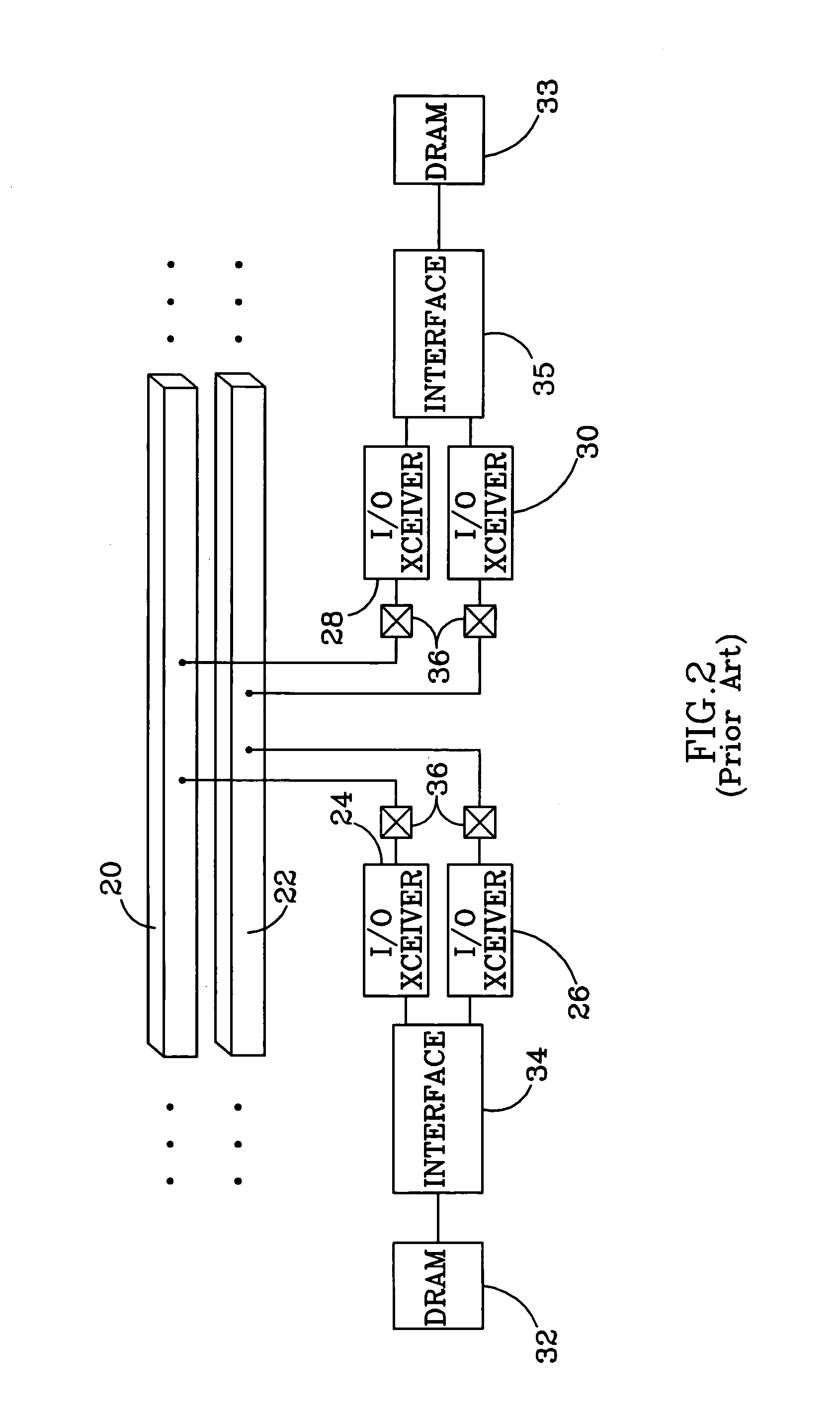Source synchronous CDMA bus interface
a synchronous cdma and bus interface technology, applied in the field of source synchronous cdma, can solve the problems of limiting system performance, bandwidth and latency of memory systems, and limiting system performance, so as to achieve high bus concurrency, improve signal integrity, and reduce channel latency
- Summary
- Abstract
- Description
- Claims
- Application Information
AI Technical Summary
Benefits of technology
Problems solved by technology
Method used
Image
Examples
Embodiment Construction
[0046]The basic principles of a wireless interconnection system in accordance with the present invention are shown in FIGS. 3a and 3b, which show plan and corresponding cross-sectional views of a package 10 which employs the present invention. The package includes two integrated circuits ULSI-A and ULSI-B which require interconnection. In this example, ULSI-A produces a signal which must be conveyed to ULSI-B. Conventionally, such a signal would be conveyed via a metal interconnect or a wire bond. Here, however, the signal is conveyed wirelessly. The signal from ULSI-A is modulated and routed to a first capacitive coupler 12, which capacitively couples the signal to a wireless transmission medium 14. The wireless transmission medium is physically separated from the ICs, and the ICs separated from each other, with a dielectric filler material 16.
[0047]The capacitively coupled signal propagates through wireless transmission medium 14. A second capacitive coupler 18 couples the propaga...
PUM
 Login to View More
Login to View More Abstract
Description
Claims
Application Information
 Login to View More
Login to View More - R&D
- Intellectual Property
- Life Sciences
- Materials
- Tech Scout
- Unparalleled Data Quality
- Higher Quality Content
- 60% Fewer Hallucinations
Browse by: Latest US Patents, China's latest patents, Technical Efficacy Thesaurus, Application Domain, Technology Topic, Popular Technical Reports.
© 2025 PatSnap. All rights reserved.Legal|Privacy policy|Modern Slavery Act Transparency Statement|Sitemap|About US| Contact US: help@patsnap.com



